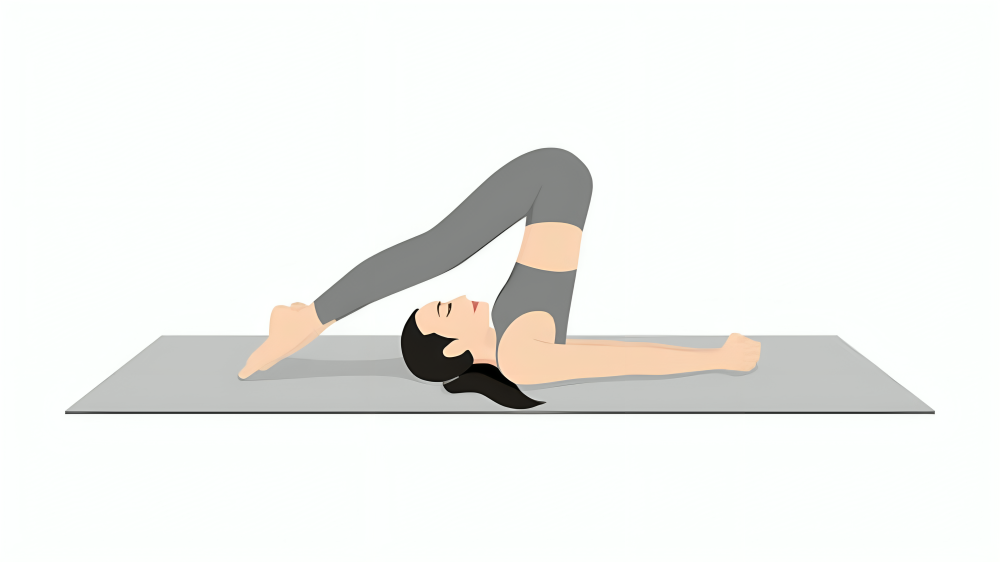
What is Halasana?
Halasana is an inverted yoga pose that basically requires one to lie on the floor and lift up the legs over the head to place the toes, touching the floor behind. This asana, in simple words, stretches the spine, shoulders, and hamstrings; it is also great for rejuvenation of one’s entire body. Not only does Halasana work on increasing your physical strength and flexibility, but it has a load of mental health benefits in its hood, too, making it a complete entity and addition to your yoga practice.
How to Do Halasana
Preparation
Get into a Comfortable Space: Place a yoga mat on the floor and lie on your back.
Loosen Your Body: Inhale and exhale with deep breaths several times to relax your mind and loosen up your body. This helps in easing into the pose.
Get into Position
Draw Legs Up: Inhale, lift your legs to a 90-degree angle with your body. Toes point towards the ceiling.
Lift Hips: With support from your hands pressing into the mat, engage your core muscles and lift your hips off the floor.
Move Your Legs Overhead: Continue lifting your hips as you gently bring your legs over your head. Try touching your toes to the floor behind you. Keep your legs straight and together.
Find Your Balance
Support Your Back: You can place your hands on your lower back for support if you’re a beginner. This will help you maintain balance and protect your spine.
Engage Your Shoulders: Bring your shoulders closer to each other, opening up the chest and laying a strong foundation.
Breathing and Holding
Hold the Posture: Hold this asana for about 15 to 30 seconds. As you progress with confidence in Halasana, you can slowly increase the duration.
Deep Breathing: Be in your breath. Deep, regular breathing soothes the mind and keeps the body steadily maintaining the pose.
Halasana Benefits
Improves Flexibility
Halasana stretches the spine, shoulders, and hamstrings; hence, improving flexibility. Improved flexibility might make many yoga postures easier and can avoid likely injuries when doing daily chores.
Strengthens the Core
Holding Halasana activates the core muscles, which may be very helpful in strengthening the abdomen and teaching it stability. A strong core promotes better posture and reduces back pain.
Stimulates the Thyroid Gland
Pressure on the thyroid area created during Halasana tends to stimulate this gland and balance it, enhancing metabolism and energy levels within the body.
Enhances Circulation
Being an inverted pose, Halasana promotes blood flow to the upper part of the body and the head, which may be useful for enhancing the flow of blood and oxygenation to the brain to sharpen focus and concentration.
Soothes the Nervous System
Halasana has a pacifying effect on the nervous system. The mild compression at the back of the neck supports the activation of the parasympathetic nervous system and hence relaxes and calms the entity by releasing stress.
Relieves Back Pain
For people who have to sit for long periods or even have bad postures, Halasana relieves back pain. The reason being, the asana stretches the spine backwards, helping release tension built up in the back muscles.
Improves Digestion
Halasana compresses the abdomen, hence massaging the internal organs, which improves digestion and helps in eliminating some of the stomach-related problems such as constipation and bloated feelings.
It’s here Sarvangasana How to Do It and what are the Benefits
FAQs
Q1: Who can practice Halasana?
Though Halasana has many benefits, this asana is not suitable for everyone. It is particularly not to be performed by people who have neck or back injuries or other areas. Pregnant women and individuals with high blood pressure should not perform this asana.
Q2: How long should I hold Halasana? It is adequate for a starter to hold Halasana for about 15 to 30 seconds. You can increase the time as comfort sets in and with practice.

